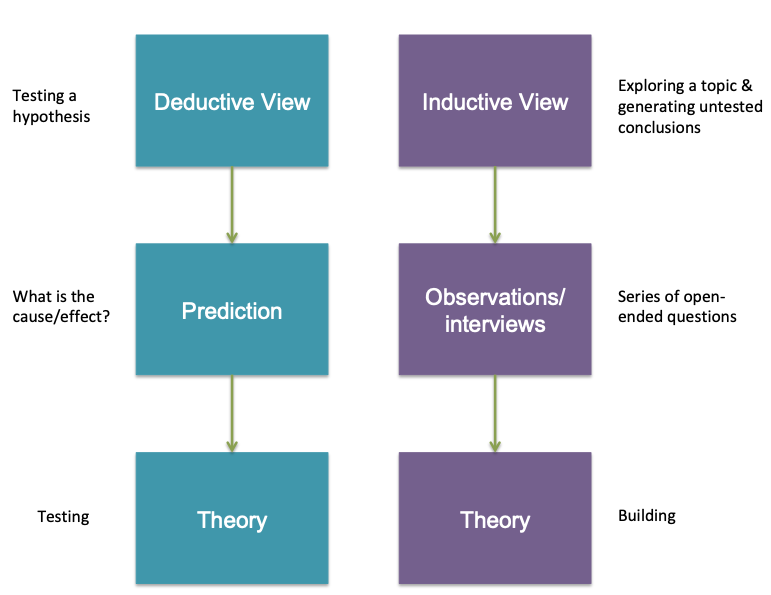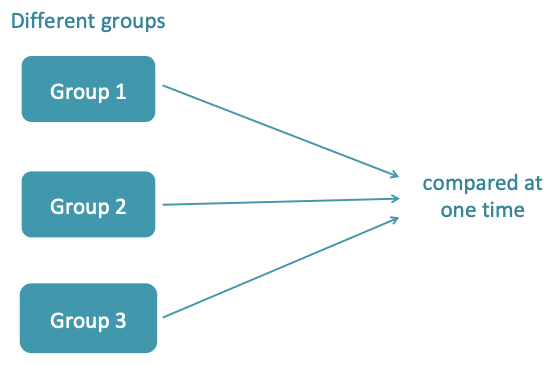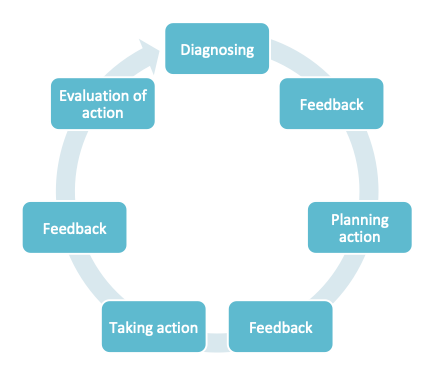learning resources
Research approaches and designs
Overview
Whether you’re reviewing existing research or determining the form of your own, understanding difference research approaches and designs can be helpful. These learning resources explore these specific elements of the research onion model.
In the audio clip (to the right) your HR tutor Andrew gives an overview of the content and below is a summary of how this fits with the relevant intermediate and advanced-level CIPD units.

1. Introduction
According to Taylor and Woodhams (2016, p96) “Having settled on an area of research and thought about the various types and sources of HR data, HR professionals then need to think about how their projects might be impacted by methodological issues. [In simple terms] how research projects are constructed and carried out”. Although this is written in the context of carrying out research the principles apply to reviewing existing research, perhaps via a literature review.
Byman and Bell (2015) explain that research designs must meet three basic criteria:
- Reliability relates to whether the results of a particular research project are repeatable and whether data collection methods are consistent.
- Research methods must be replicable, as in another researcher must be able to come along and replicate the research in the same, or perhaps a different, setting.
- Research designs must be valid, with conclusions drawn consistent with the data that has been collected. Is the data collected measuring what it is believed to be measuring?
Byman, A. and Bell, E. (2015) Managing Information and Statistics, Oxford, Oxford University Press.
Taylor, S. and Woodhams, C. (2016) Studying Human Resource Management, London, CIPD.
2. Research approaches - induction and deduction
In her book Research Methods in Human Resource Management, Anderson (2004) explains how researchers refer to ‘deductive’ and ‘inductive’ research approaches in understanding the relationship between theory and data.
Deduction
Put simply, deduction is a process of testing established generalisations and involves taking a proposition that is thought to be true and testing it out in different situations. Here a process of logic is applied to something that is thought to be true, a theory is derived, and then the theory is tested out in an empirical way in different situations, conditions and contexts. From the evidence generated the theory can be provisionally confirmed, amended or discarded altogether. Using a deductive approach, the researcher develops a theory and hypothesis and then designs a research strategy to test the hypothesis.
Induction
An alternative approach is to start at the level of practice, beginning with what is effectively a clean sheet. Through a process of observation over a period of time it is possible to establish some general propositions about the nature of what has been observed, and in this way a theory is generated. Using an inductive approach, the researcher would collect data and develop theory as a result of their data analysis.
Activity
Consider how you could take an deductive or inductive approach to research in different areas of HR, such as reward and employee retention.
Anderson, V. (2004) Research Methods in Human Resource Management, London, CIPD.

3. Research designs
According to Bryman (2008, p. 31) a research design:
‘provides a framework for the collection and analysis of data.’
Valerie Anderson (2009) suggests that there are four basic research strategies or designs that the HR professional can select from.
- Cross-sectional
- Case study
- Action research
- Comparative.
Each of these designs is appropriate in different circumstances, so one is not better than the other.
Activity
The sections below explore these four research designs in more detail. To support your learning create a table that summarises the main points, using the following headings:
- Definition
- Advantages
- Disadvantages
- Examples of their use.
Bergman, M. M. (2008) The straw men of the qualitative-quantitative divide and their influence on mixed methods research in M.M. Bergman (Ed.), Advances in mixed methods research, London, Sage.
Cross-sectional
Cross-sectional study designs are used when studying one or more variables within a given population at one point in time. So for example, this might be taking a topic and doing a comparison from different parts of the organisation or indeed different organisations, with the key here that the information is gathered at the same time. Data could be gathered through surveys or interviews.
This type of research is useful when seeking to reveal patterns or make comparisons between groups or scenarios. It can be low cost to organise and administer, with wide coverage. Cross-sectional study designs can produce a lot of information. Nevertheless, depth may be lost for breadth and poor survey questions can lead to poor quality data.
Potential problems include:
- Is the sample size large enough to be representative?
- How can you separate the factors you are interested in from all other factors?
- Does the research explain why the correlation exists?

Case study
Case study research helps to bring understanding of a complex issue and can extend experience or add strength to what is already known through previous research.
Researcher Robert K. Yin (2003) defines the case study research method as an empirical inquiry that investigates a contemporary phenomenon within its real-life context; when the boundaries between phenomenon and context are not clearly evident; and in which multiple sources of evidence are used.
Case studies are commonly used to study organisations, individuals, partnerships, communities and projects. They can also be:
- Exploratory
- Descriptive
- Explanatory/causal.
They rely on multiple sources of evidence, for example documents, physical artefacts, film and video, interviews, direct-observations, surveys, participant-observations, etc.
The advantages of the case study method are its applicability to real-life, contemporary, human situations and its public accessibility through written reports. Case study results relate directly to the reader’s everyday experience and facilitate an understanding of complex real-life situations.
Also, the case-study method is useful when the issue being examined is very difficult to separate from the wider context. Interviews and observations are often used. This method provides a focus on one specific issue, for example a department. However, the data can be difficult to analyse.
Yin, R. K. (2003) Case study research: Design and methods (3rd ed.), Thousand Oaks, Sage.

Action research
Action research is a type of applied research designed to find an effective way of bringing about a conscious change in a partly controlled environment.
Within action research, the researchers are involved in a continual cycle of diagnosing, planning, taking action and then observing the effects of the action.
It is usually conducted within a single organisation and is similar to the case study approach.
A potential drawback of action research is that it can be descriptive rather than analytical. Also, it involves a significant time commitment that can be difficult to justify in terms of knowledge and understanding outside of the research setting.

Comparative
The major aim of comparative research is to identify similarities and differences between social entities. Comparative research seeks to compare and contrast nations, cultures, societies, and institutions. Academics differ on their use of the terminology: To some, comparative research is strictly limited to comparing two or more nations, but other scholars prefer to widen the scope to include comparison of many different types of social and/or cultural entities, such as organisations.
Comparative research allows for comparisons to be made between groups, organisations or situations. The challenge is how to select the proper combination of relevant cases and variables to validate theory without disregarding relevant contextual features. Research data needs to be standardised to aid the analysis. There is also a need to be careful on how to gather and analyse information.

4. Factors influencing research design
Here’s a summary of the main factors:
- Nature of topic: This will determine your approach and research methods. Important questions to consider are: What are my research questions? What data will enable me to answer those questions? What is the most appropriate way to obtain that data?
- Literature: If there is a lot of existing literature on your topic, then it is likely that you will choose methods that enable you to build on what is already known. However, if your topic is relatively new and ‘unexplored’, then you might choose a different approach.
- Time: What time is available to you? Different research methods will take different amounts of time.
- Resources: Some research methods require specialist resources, for example, quantitative data analysis software. Will you need any particular resources? If so, are they available and, if necessary, do you have time to learn how to use them?
- Access and permission: Will you have access to all the data you need? Does your project sponsor have a clear preference for a particular research method?
- Validity, reliability and generalisability: How valid and reliable will the results be? Can the results of the research be applied more generally and more widely than the study itself or are they only relevant to the specific context of the study?
- Ethics: Will the method satisfy ethical considerations?
Thinking through these factors might help you to justify the chosen approach you have decided to take.
Contact Andrew
andrewwales_lod@btinternet.com